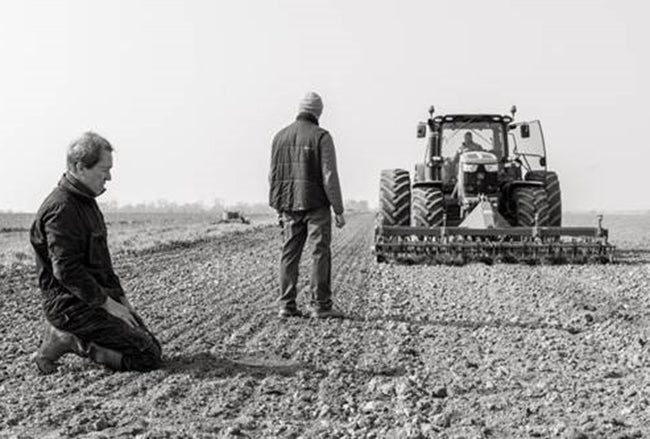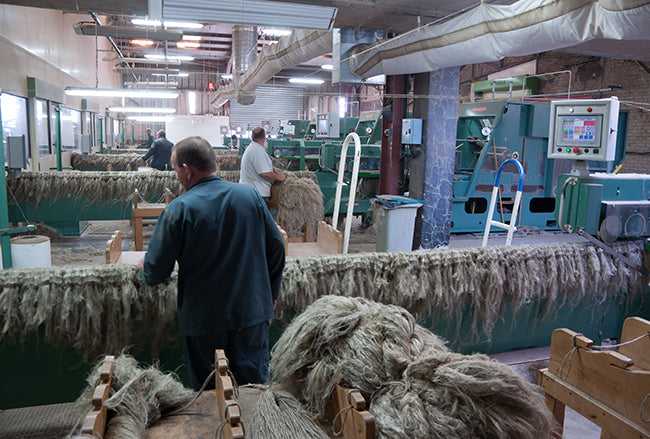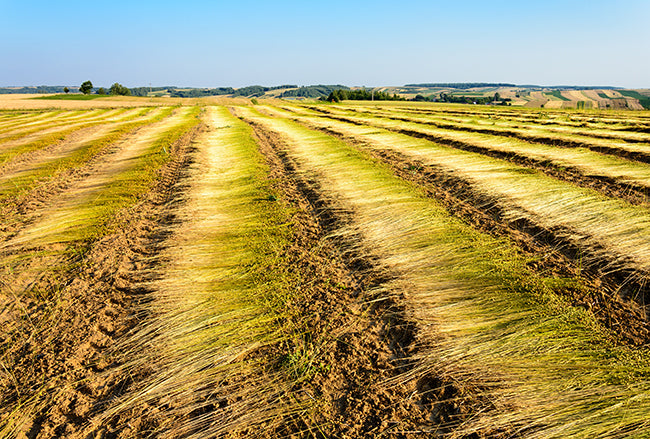Over 25 years in the textile industry producing the finest quality linen fabrics using our sustainable process

The Harvest
Flax fiber with a European origin. 1st in the world in quantity and quality, with ethical production carried out by a skilled local workforce, in compliance with the rules of the International Labor Organization.

Sowing
The sowing of the flax takes place between Mid-March and Mid-April. Flax is grown according to a crop rotation method, with the rotation renewed every 6 to 7 years, regenerating the soil for the succeeding crops of beet, wheat, potatoes, etc.
Today’s flax farmers can choose between the twenty or so varieties available. In addition to improving yields, new varieties enable plot-specific sowing that takes into consideration potential lodging and disease criteria; incorporating fertiliser savings and early harvesting criteria for a regulated staggering of maturation.

Flowering
The flax blooms around Mid-June. Many flowers bloom with, 80 to 100 flowers per stem.

Pulling
Pulling occurs about 5 weeks after flowering. Plants are laid on the ground in swathes (layers of flax one meter wide).
The flax isn't cut but is instead pulled up, preserving the length of the fibres contained within its stem

Retting & Bailing
The first natural phase in the processing of the plant into fibre, retting stimulates the separation of the fibres by breaking down the natural cement binding them to the straw. This natural action is performed by micro organisms present on the soil, a suitable dose of rain and zero chemicals. The swathes are turned halfway through the process.

Scutching
erutching is an entirely mechanical process, without the use of chemicals, that takes place throughout the year. Facilities for scutching are located in the immediate proximity of the fields. The straws are brought from the farm to the scutching mill by the farmer and then converted into fiber

Spinning & Weaving
During preparation, slivers of combed flax are mixed together, blending several batches of fibers originating from different fields, regions and years. Mixed together, equalised and stretched out, the slivers become roving before being spun.

Dyeing & Finishing
Most of our fabrics are dyed in France in a dyeing mill that is run by highly skilled workers who are experienced in producing fabric for furnishing and home textiles. It was created in 1925.

Quality Control
All of our linen fabric is checked to ensure it meets our highest standards.
SINCE 1994
THE PERFECT FABRIC
Linen is the oldest and most natural product that has ever existed...It's organic, innate to nature, needs no water, is sustainable and environmentally friendly.
Why World Linen
- Linen specialists since 1994

- how we ensure top quality linen

- environmentally responsible







